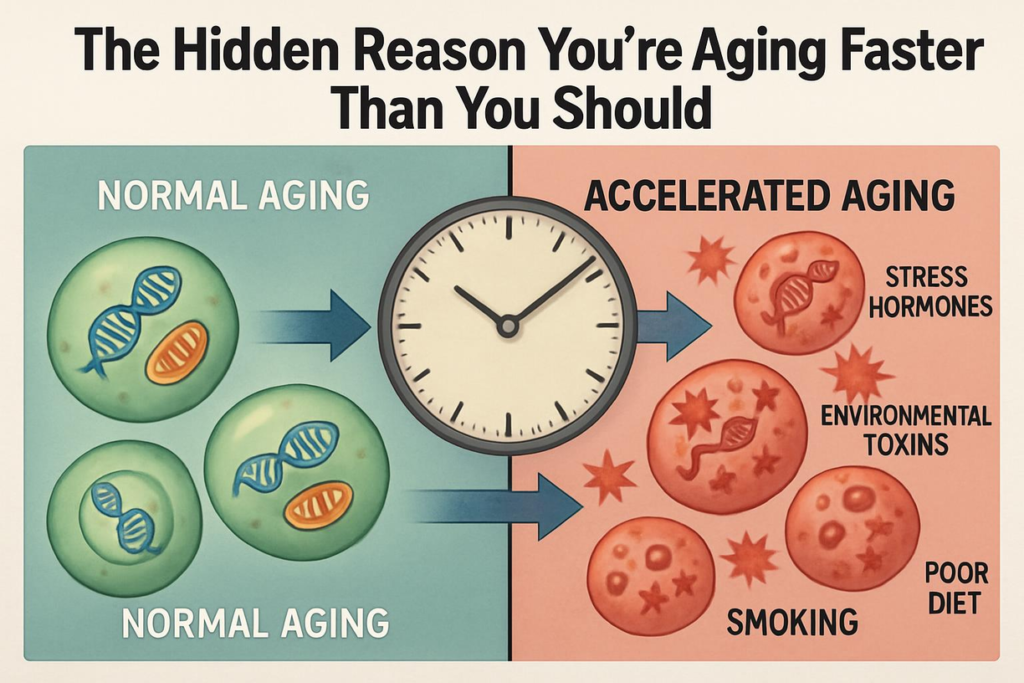Type 2 Diabetes (T2D) has emerged as a global health challenge, affecting millions worldwide. It is a chronic condition characterized by insulin resistance and the inability to regulate blood sugar levels effectively. While conventional treatments like medication and lifestyle changes are helpful, they often fall short in addressing the root cause of the disease. This is where the promising field of stem cell-based therapies enters the picture, offering a potential game-changer in the treatment of Type 2 Diabetes Mellitus (T2DM).
In this article, we will embark on an exploratory journey into the world of stem cells, specifically focusing on their application in treating Type 2 Diabetes. We aim to shed light on the revolutionary advances in stem cell research and their potential to transform the lives of patients with Type 2 Diabetes.
What is Type 2 Diabetes?
Type 2 Diabetes is often likened to a lock-and-key problem where the key (insulin) is unable to unlock the cells to allow sugar to enter, resulting in elevated blood sugar levels. This condition not only affects the body’s ability to use insulin effectively but also impacts various organs over time, leading to serious health complications.
Current Treatments for Type 2 Diabetes
Currently, the treatment landscape for Type 2 Diabetes includes a combination of medication, insulin therapy, dietary modifications, and physical activity. However, these treatments mainly manage the symptoms rather than cure the disease. They are like constantly mopping the floor without fixing the leaky faucet.
Introduction to Stem Cell Therapy
Stem cells are the body’s raw materials — cells from which all other cells with specialized functions are generated. Imagine them as blank canvases, adaptable and capable of transforming into any cell type the body needs. This remarkable ability makes stem cells a cornerstone in the field of regenerative medicine, especially for conditions like Type 2 Diabetes.
Purpose of the Article
Our goal here is to delve deep into the potential of stem cell-based therapies in managing and possibly curing Type 2 Diabetes. We aim to provide a comprehensive overview of the latest advancements, ongoing research, and the future implications of these therapies in treating this widespread disease.
| Key Aspect | Description |
|---|---|
| Type 2 Diabetes | A chronic condition characterized by insulin resistance and high blood sugar levels. |
| Current Treatments | Include medication, diet, exercise, and insulin therapy. |
| Stem Cells | Undifferentiated cells with the potential to transform into various cell types in the body. |
| Stem Cell Therapy | A regenerative medicine approach that uses stem cells to repair or replace damaged cells and tissues. |
As we progress through this article, we will explore how stem cells could be the key to unlocking a new era in the treatment of Type 2 Diabetes, potentially leading to more effective and long-lasting solutions.
Understanding Stem Cells
What are Stem Cells?
At their core, stem cells are the master builders of the human body, the original source from which all other cells with specialized functions are generated. Think of them as the foundation stones of a building, essential for the structure’s integrity and versatility. They have two key properties: the ability to differentiate into other cell types and the capacity for self-renewal.
Types of Stem Cells
When discussing stem cells, it’s crucial to understand their types. These include:
- Embryonic Stem Cells: These are like the all-purpose flour in a bakery, capable of turning into almost any cell type.
- Adult Stem Cells: Found in adult tissues, they are more like specialized flours used for specific recipes, limited in their versatility compared to embryonic stem cells.
- Induced Pluripotent Stem Cells (iPSCs): These are adult cells reprogrammed to behave like embryonic stem cells. Imagine an architect who can redesign a building to serve a completely different purpose.
The Role of Stem Cells in Regenerative Medicine
In regenerative medicine, stem cells are the stars of the show. They have the potential to repair, replace, or regenerate cells and tissues, offering hope for diseases that currently have no cure, including Type 2 Diabetes. It’s like using a sophisticated repair kit that adapts to fix various problems within the body.
Stem Cell Research in Type 2 Diabetes
Historical Background
The journey of stem cells in the context of Type 2 Diabetes research is a tale of discovery and innovation. Initially, researchers focused more on Type 1 Diabetes, aiming to replace the insulin-producing beta cells destroyed by the immune system. However, the spotlight has now shifted towards Type 2 Diabetes, where the problem lies more in the inefficient use of insulin and the gradual loss of beta cell function.
Current Research
Modern research is exploring the use of various types of stem cells, like mesenchymal stem cells (MSCs) and bone marrow-derived mesenchymal stem cells, to regenerate or repair the beta cells or improve their function. This research is akin to finding a way to not just patch up the cracks in a wall but to reinforce the wall itself.
Mechanisms of Action
The exact mechanisms by which stem cells could treat Type 2 Diabetes are complex and multifaceted. They could involve generating new insulin-producing cells, improving the existing beta cell function, or targeting the body’s insulin resistance. It’s like not only giving a patient a fish (insulin) but teaching them how to fish (improving their body’s ability to use insulin).
| Stem Cell Type | Potential Role in Type 2 Diabetes |
|---|---|
| Embryonic Stem Cells | Can potentially be differentiated into insulin-producing cells. |
| Adult Stem Cells | May help in repairing or regenerating beta cells. |
| Induced Pluripotent Stem Cells | Offer a personalized approach to treating diabetes by using the patient’s own cells. |
This exploration into the world of stem cells and their role in treating Type 2 Diabetes not only highlights the immense potential of these therapies but also underscores the complexity and challenges involved in turning this potential into a reality.
Clinical Trials and Studies
Overview of Key Studies
The landscape of clinical trials focusing on stem cell-based therapies for Type 2 Diabetes is expanding rapidly. These studies range from small-scale, preliminary trials to more extensive, multi-center studies. They are akin to a series of rigorous experiments, each designed to test a specific hypothesis about how stem cells can treat or manage Type 2 Diabetes.
Results and Findings
The results from these trials have been promising, yet varied. Some studies show significant improvements in beta cell function and insulin sensitivity, akin to fine-tuning a car’s engine for better performance. Other trials report more moderate outcomes, suggesting that the effectiveness of stem cell therapies might depend on factors like the cell type used and the individual patient’s condition.
Ongoing Research
The journey of discovery continues, with ongoing research exploring various approaches such as:
- Transplantation of Mesenchymal Stem Cells (MSCs): These trials are akin to planting new seeds in a garden, hoping they will grow and enhance the garden’s health.
- Bone Marrow-Derived Mesenchymal Stem Cell therapies: This approach is like using a tried and tested fertilizer (bone marrow), known for its rich properties, to improve the garden’s yield.
- Induced Pluripotent Stem Cell (iPSC) techniques: Here, the focus is on customizing the treatment, much like genetically modifying the seeds to suit the specific soil (patient’s body) conditions.
| Clinical Trial Focus | Summary of Findings |
|---|---|
| MSC Transplantation | Shows potential in improving beta cell function and insulin sensitivity. |
| Bone Marrow-Derived MSC Therapy | Demonstrates promise in regenerating or repairing beta cells. |
| iPSC Techniques | Offers a personalized approach but requires further exploration. |
The ongoing research not only provides hope for effective treatments in the future but also underscores the need for more comprehensive studies to fully understand and harness the potential of stem cells in treating Type 2 Diabetes.
Challenges and Controversies
Ethical Considerations
The use of stem cells, particularly embryonic stem cells, raises significant ethical questions. It’s a moral quandary, akin to the debate over the use of nuclear energy — powerful yet controversial.
Scientific Challenges
The path to developing successful stem cell-based therapies is fraught with scientific hurdles. These include ensuring the stability and safety of the transplanted cells, akin to making sure a new piece of machinery integrates well with an existing factory line.
Regulatory Hurdles
The regulatory landscape for stem cell therapies is complex and varies globally. Navigating this landscape is like finding a path through a dense, uncharted forest, requiring careful steps to ensure safety and efficacy.
| Challenge | Description |
|---|---|
| Ethical | Concerns regarding the source of stem cells, especially embryonic stem cells. |
| Scientific | Issues related to cell stability, differentiation, and integration. |
| Regulatory | The need for stringent guidelines to ensure safe and effective treatments. |
These challenges highlight the delicate balance between the immense promise of stem cell-based therapies and the practical realities of bringing these therapies to patients with Type 2 Diabetes.
In the next section, we will look ahead to the future perspectives of stem cell therapy in the realm of Type 2 Diabetes, contemplating the advancements we might see and the impact they could have on treatment paradigms.
Future Perspectives
Potential of Stem Cell Therapy
The potential of stem cell therapy for Type 2 Diabetes is like a vast, largely uncharted ocean, brimming with possibilities. Researchers are optimistic that these therapies could revolutionize the treatment of Type 2 Diabetes, offering more than just symptomatic relief. The goal is to restore the body’s ability to produce and use insulin effectively, akin to repairing and reprogramming a malfunctioning computer rather than just continually rebooting it.
Integrating into Mainstream Treatment
The integration of stem cell-based therapies into mainstream treatment for Type 2 Diabetes is not a distant dream but a forthcoming reality. This integration will be akin to incorporating a new, powerful tool into an existing toolkit, one that could offer more precise and long-term solutions compared to current treatments.
FAQ
Q: What are stem cell-based therapies for type 2 diabetes?
A: Stem cell-based therapies for type 2 diabetes involve using different types of stem cells, such as mesenchymal stem cells, to potentially restore the function of insulin-producing cells and improve glucose metabolism in patients with type 2 diabetes.
Q: How do stem cell-based therapies work in treating type 2 diabetes?
A: Stem cell-based therapies aim to replenish or regenerate the insulin-producing beta cells in the pancreas, improve insulin sensitivity, and modulate the immune response, which ultimately may help in better management of type 2 diabetes.
Q: Are stem cell transplants a viable therapy for type 2 diabetes?
A: Research is ongoing on the efficacy of stem cell transplants for type 2 diabetes. While early studies show promise, more extensive clinical trials are needed to establish the safety and effectiveness of this therapy for treating type 2 diabetes.
Q: What are the safety considerations for stem cell therapy in patients with type 2 diabetes?
A: Safety considerations for stem cell therapy in patients with type 2 diabetes include the potential risk of immune rejection, tumor formation, or unintended differentiation of stem cells. Rigorous safety assessments and monitoring are essential in the development of these therapies.
Q: Can stem cell therapy be used for the treatment of type 2 diabetes in combination with other existing treatments?
A: Combining stem cell therapy with existing treatments for type 2 diabetes, such as insulin therapy or oral medications, is an area of active investigation. The goal is to enhance the overall effectiveness of treatment and potentially reduce the reliance on conventional therapies.
Q: What are the different types of stem cells used in treatment for type 2 diabetes?
A: The types of stem cells being explored for the treatment of type 2 diabetes include mesenchymal stem cells, hematopoietic stem cells, pluripotent stem cells, and multipotent stromal cells, each with unique therapeutic potential for addressing different aspects of the disease.
Q: Are there any risks or complications associated with stem cell transplantation in patients with type 2 diabetes?
A: Risks and complications of stem cell transplantation in patients with type 2 diabetes may include infection, bleeding, or adverse immune reactions. Close monitoring and proper medical care during and after the transplantation are essential to manage these potential risks.
Q: What is the role of adult stem cells in the development of therapies for type 2 diabetes?
A: Adult stem cells, including mesenchymal stromal cells, play a crucial role in the development of therapies for type 2 diabetes due to their potential to regenerate pancreatic beta cells, modulate inflammation, and enhance insulin sensitivity in affected individuals.
Q: How do stem cell therapies for type 2 diabetes differ from those for type 1 diabetes mellitus?
A: Stem cell therapies for type 2 diabetes focus on addressing insulin resistance, while those for type 1 diabetes mellitus target the replacement of destroyed insulin-producing cells. The treatment goals and mechanisms of action differ based on the specific characteristics of each type of diabetes.
Q: What is the current status of research on stem cell-based therapies for the treatment of type 2 diabetes?
A: Research on stem cell-based therapies for the treatment of type 2 diabetes is evolving rapidly, with ongoing efforts to optimize the therapeutic potential of different types of stem cells, refine transplantation techniques, and evaluate their long-term safety and efficacy in clinical settings.
Conclusion
The journey of stem cells from laboratory research to bedside treatment for Type 2 Diabetes is a path filled with potential and promise. It’s like watching the dawn of a new era in medical science, one where chronic diseases like Type 2 Diabetes could be treated more effectively than ever before.
In this article, we have navigated through the complex and fascinating world of stem cell-based therapies for Type 2 Diabetes. From understanding the basics of stem cells and their types to exploring the groundbreaking research and clinical trials, we have seen how these therapies could potentially transform the treatment landscape for Type 2 Diabetes.



